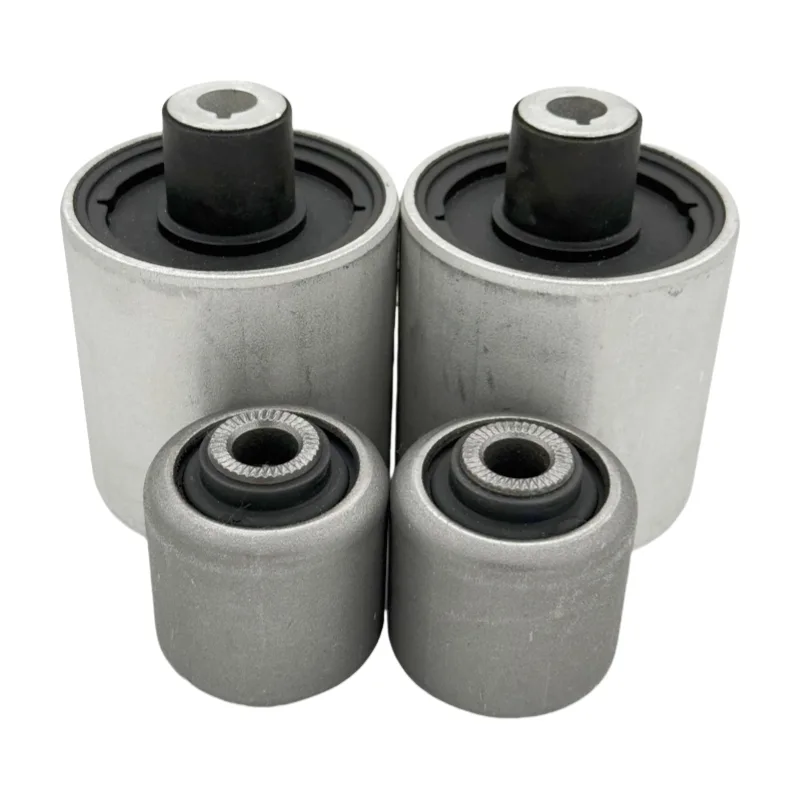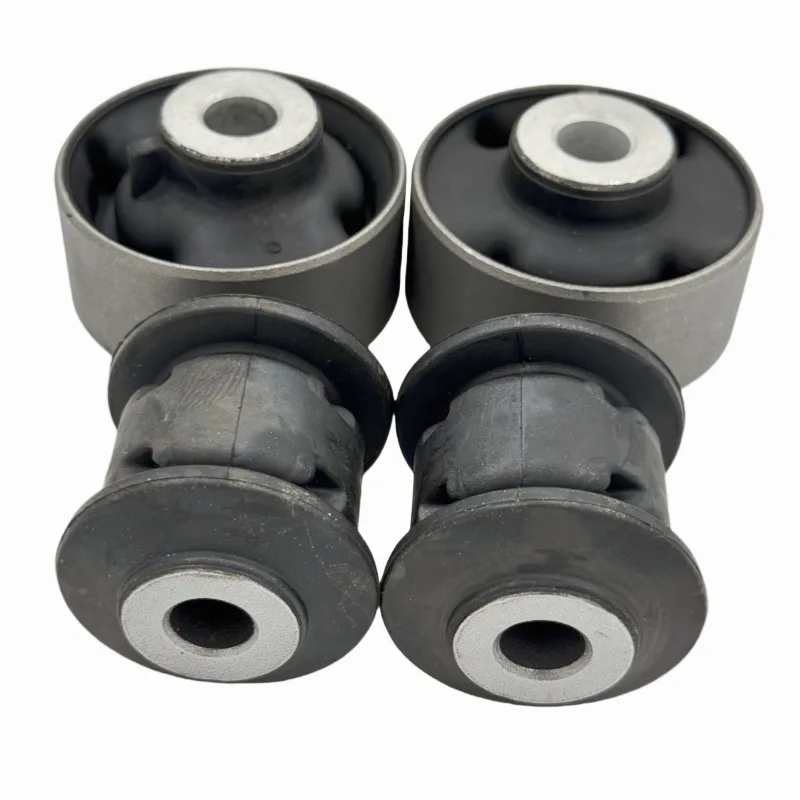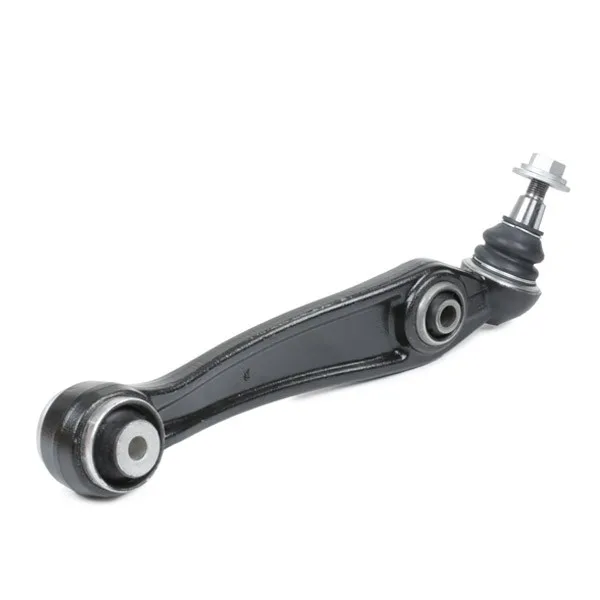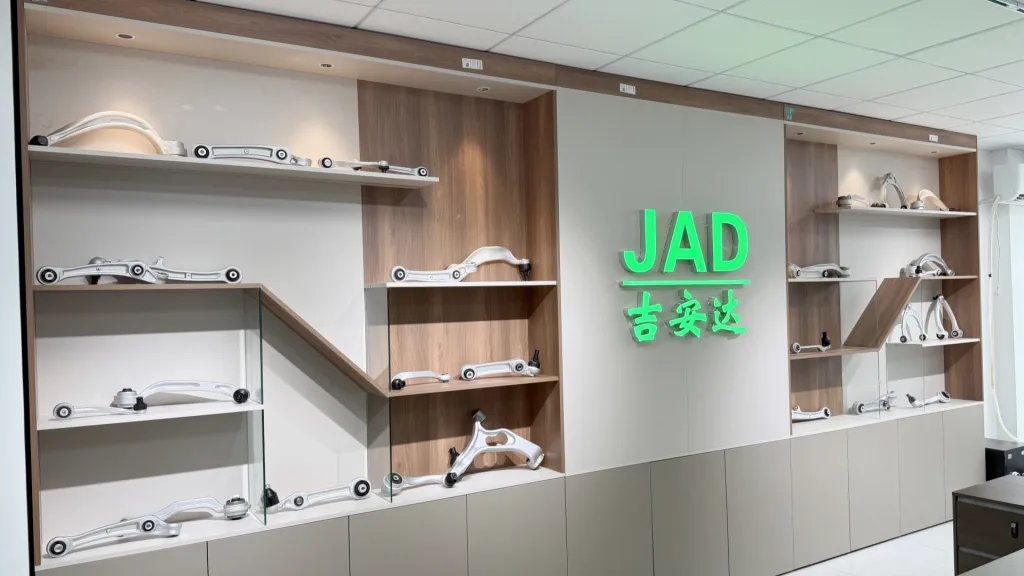Introduction
Control arm ball joints are vital for a vehicle’s suspension system, ensuring safe handling and a smooth ride. These components connect the control arm to the wheel hub, allowing precise movement under dynamic loads. Without proper control arm ball joint maintenance, wear can lead to steering issues, uneven tire wear, and safety risks. This article explains why regular checks and timely replacements are essential for repair shops and parts suppliers in the automotive aftermarket.

What Is a Control Arm Ball Joint?
A control arm ball joint is a movable joint encased in a metal housing, linking the control arm (also called an A-arm or wishbone) to the wheel hub. It consists of a ball stud, a durable polymer bushing, and a dust boot that seals a lubricated chamber. This setup allows the suspension to handle multi-directional forces while enabling smooth steering and movement over bumps. High-quality ball joints, often tested for tensile strength and durability (per IATF16949 standards), ensure reliability for aftermarket applications.

Why Control Arm Ball Joint Maintenance Matters
Ball joints endure constant stress from road conditions, leading to gradual wear. The dust boot, which protects the lubricated chamber, can crack or leak over time, allowing dirt and debris to enter. This accelerates wear between the ball stud and bushing, causing:
- Steering Misalignment: Worn joints lead to vague steering or pulling.
- Uneven Tire Wear: Misaligned wheels wear tires unevenly, increasing costs.
- Driving Instability: Excessive wear creates looseness, risking wheel misalignment or steering failure.
Neglecting maintenance can result in critical safety hazards, such as sudden joint failure, causing loss of control. For repair shops, proactive maintenance reduces customer complaints. For suppliers, stocking reliable parts ensures trust.

Signs of Ball Joint Wear
Watch for these symptoms of failing ball joints:
- Clunking Noises: Sounds near wheels when driving over bumps.
- Loose Steering: Vague or unresponsive steering response.
- Uneven Tire Wear: Abnormal wear patterns on tires.
- Vehicle Pulling: Drifting to one side during driving.
Regular inspections catch these issues early, preventing costly repairs. Learn more about suspension diagnostics.
How to Maintain Control Arm Ball Joints
Proper control arm ball joint maintenance involves regular checks and timely action:
- Inspect the Dust Boot: Check for cracks or grease leaks every 12,000 miles or annually. Replace damaged boots immediately to prevent contamination.
- Monitor Usage Conditions: Heavy driving or harsh environments (e.g., salty roads) accelerate wear. Adjust inspection frequency accordingly.
- Replace Proactively: Swap out worn ball joints before failure, especially if symptoms like clunking or loose steering appear.
- Choose Quality Parts: Opt for IATF16949-certified ball joints, rigorously tested for durability, to ensure long-lasting performance.
Professional manufacturers producing 6,000 control arms daily with advanced forging and testing ensure reliable parts for the aftermarket. Explore control arm production.

Tips for Aftermarket Professionals
To enhance control arm ball joint maintenance:
- Stock Durable Parts: Source from suppliers with extensive model coverage and warranties (e.g., 2-year, 100,000-km).
- Educate Customers: Explain the risks of neglecting ball joint wear to encourage timely repairs.
- Use Precision Tools: Employ coordinate measuring machines for accurate diagnostics, as top manufacturers do.
- Stay Proactive: Regular maintenance prevents safety issues and boosts shop reputation.
Explore our control arm catalog.
Conclusion
Control arm ball joint maintenance is critical for vehicle safety and performance. Regular inspections, timely replacements, and high-quality parts prevent steering issues, tire wear, and safety risks. For repair shops and parts suppliers, prioritizing maintenance ensures customer satisfaction and business success. Stay ahead with reliable suspension components and share your maintenance tips below!

References:
